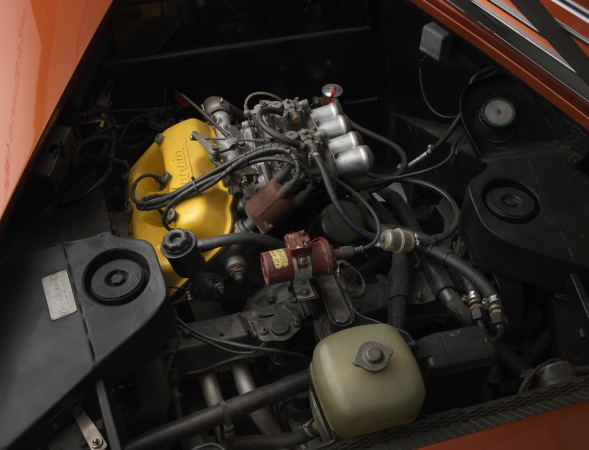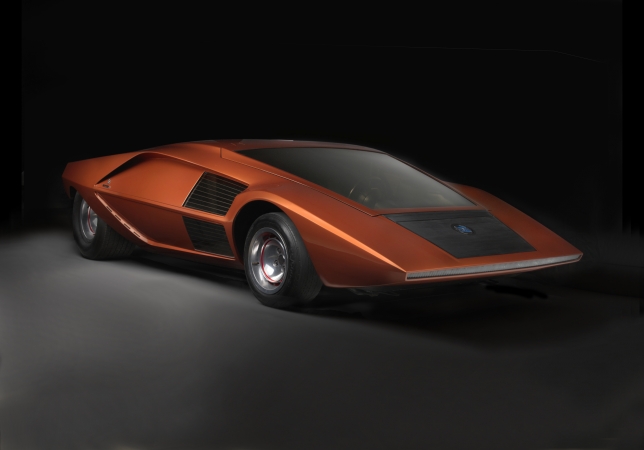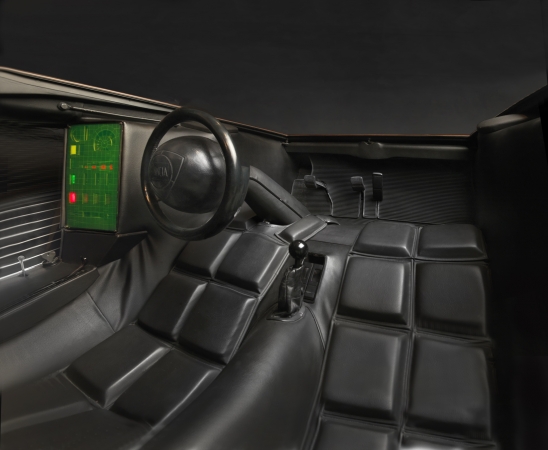Lender: The XJ Wang Collection New York, New York
Sponsored by: Tuck Hinton Architects
Pininfarina and Bertone were two of Italy’s best recognized and most successful postwar coachbuilders. Both Milanese carrozzerie competed for commissions and they debuted outrageous concept cars to impress the public and to entice automakers into choosing one of them over the other. In 1970, at the Turin Auto Show, Bertone unveiled the Lancia Stratos HF, which soon became popularly known by its internal nickname: Zero.

1970 Lancia Stratos HF Zero. The XJ Wang Collection. Image © 2016 Peter Harholdt 
1970 Lancia Stratos HF Zero. The XJ Wang Collection. Image © 2016 Peter Harholdt 
1970 Lancia Stratos HF Zero. The XJ Wang Collection. Image © 2016 Peter Harholdt 
1970 Lancia Stratos HF Zero. The XJ Wang Collection. Image © 2016 Peter Harholdt 
1970 Lancia Stratos HF Zero. The XJ Wang Collection. Image © 2016 Peter Harholdt
To challenge Pininfarina, whose designs tended to be alluringly curvaceous, Bertone produced a very low, sharply chiseled coupe that appeared to have been carved out of a solid block of bronze. At only 33 inches high, it was arguably low enough to be driven right under a semitrailer. Design experts have commented that the Stratos HF Zero was a significant step between the 1968 Alfa Romeo Carabo and the production Lamborghini Countach. Even after more than thirty years, the Stratos remains extremely futuristic looking. Nothing about it was conventional, save for the wheels in all four corners. The steering column could be moved forward to allow more room to enter the vehicle. Simultaneously, a hydraulic mechanism opened the wide Perspex windscreen, which served as the car’s single door. Occupants could see directly ahead and above—and little else.
The cost of building the Zero was reportedly forty million lire (about $450,000 in 1970). Nuccio Bertone drove the Stratos on public roads to Lancia’s offices, dazzling all who saw the impossibly low coupe, and marveling at it himself when he drove it under the closed entrance barriers at Lancia’s racing department. The result of that meeting was the radical Lancia Stratos rally car. Although the production Lancia Stratos, with its midmounted Fiat/Ferrari V-6 engine, did not closely resemble the Zero, the edgy, all-wheel-drive race car would probably not have been built had it not been for the influence of the inimitable Zero.
—Adapted from the exhibition catalogue essay by Ken Gross
